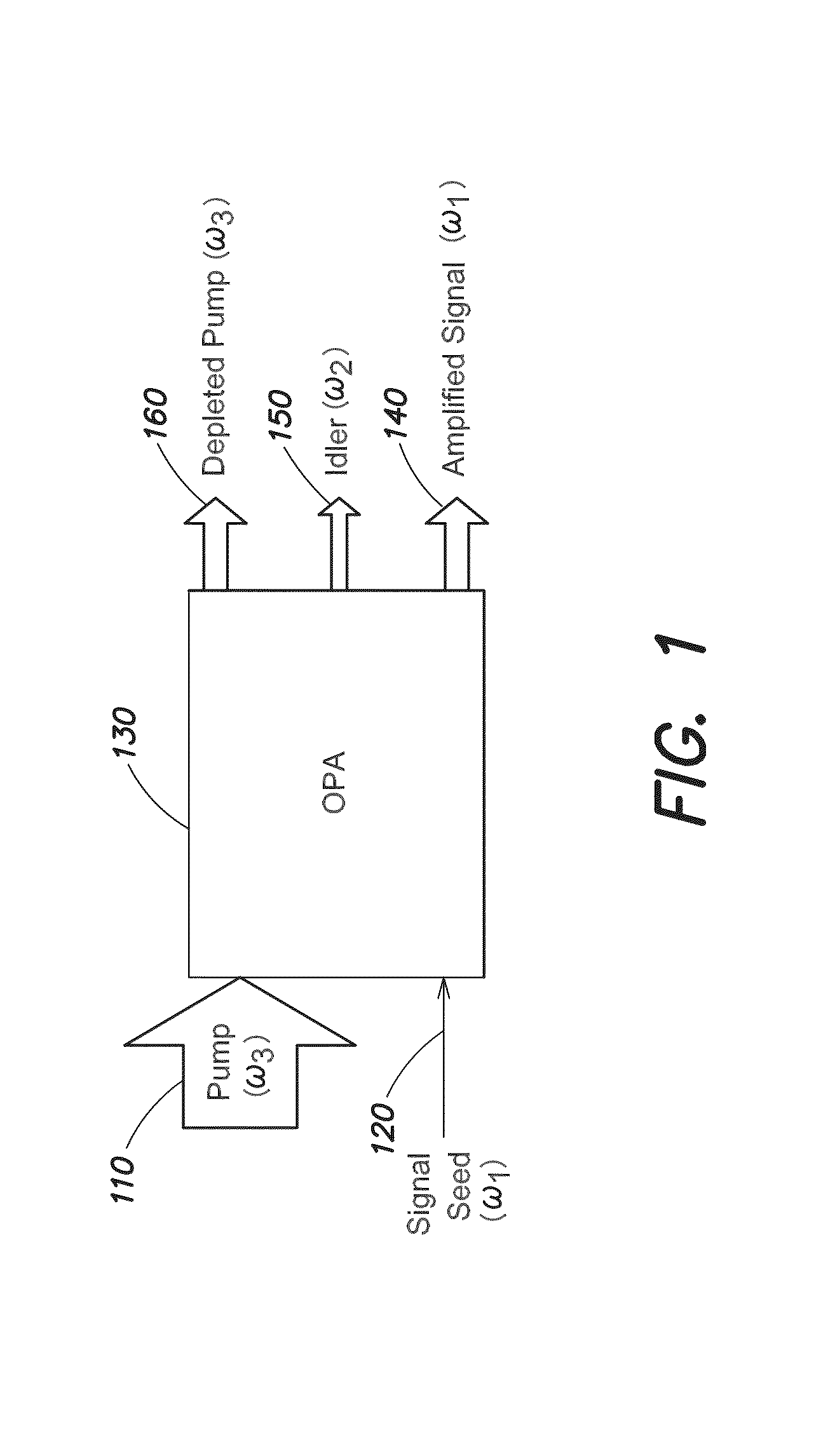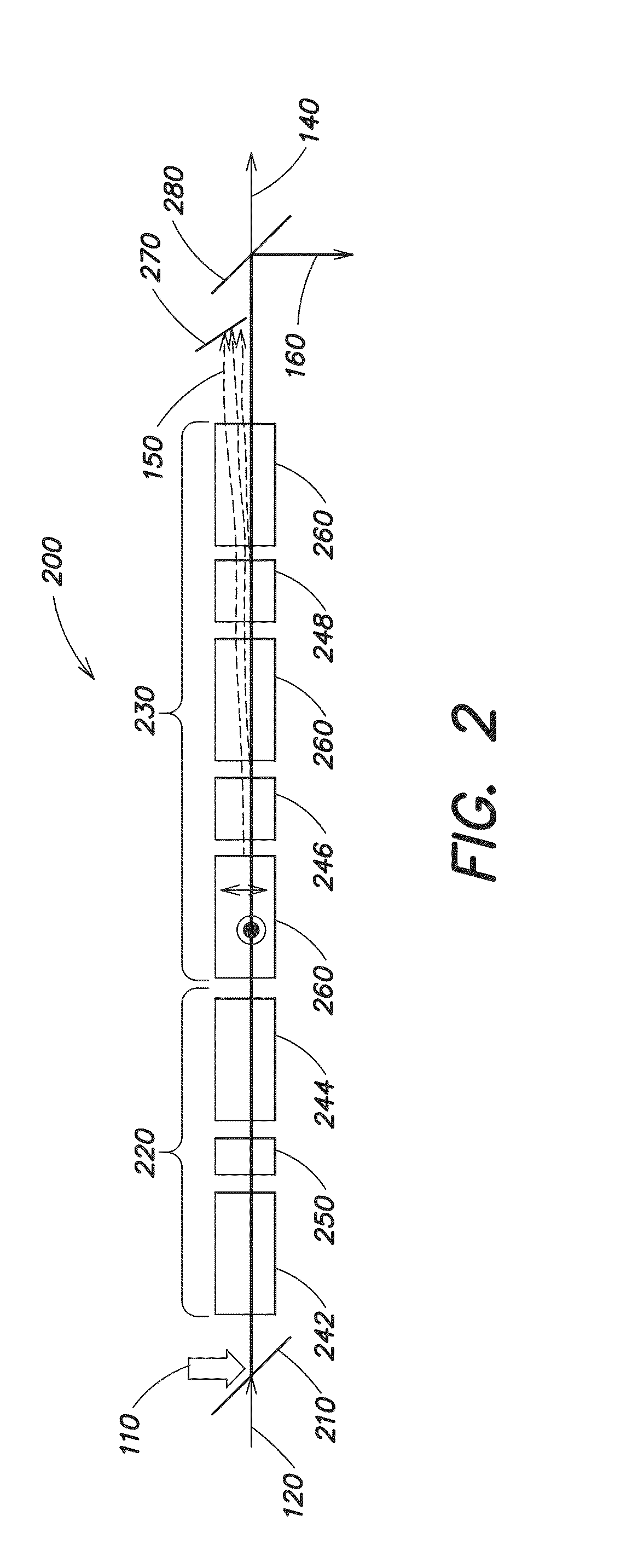Methods and apparatus for idler extraction in high power optical parametric amplifiers
an optical parametric amplifier and high-power technology, applied in non-linear optics, light demodulation, instruments, etc., can solve the problems of reducing back-conversion, limiting the pump-to-signal conversion efficiency, and affecting the quality of signal beams
- Summary
- Abstract
- Description
- Claims
- Application Information
AI Technical Summary
Benefits of technology
Problems solved by technology
Method used
Image
Examples
Embodiment Construction
[0035]Aspects and embodiments are directed to a methodology for improving the conversion efficiency of an optical parametric amplifier (OPA) and avoiding back-conversion when employing a pump beam with a non-uniform spatial profile. Some prior approaches to avoiding back-conversion in a non-uniform pump beam include adjusting the incident pump fluence or total OPA path length so that no part of the pump spatial profile is ever depleted so as to avoid the initial onset of back-conversion. However, this approach significantly limits the overall conversion efficiency because the lower intensity regions of the pump beam spatial profile are not converted as efficiently as the higher intensity regions. Aspects and embodiments provide a multi-stage OPA and method for extracting the idler beam between or following gain stages of the OPA using walk-off beam displacer crystals or dichroic mirrors, for example. In particular, according to certain embodiments, for Type II phase matching, a pola...
PUM
| Property | Measurement | Unit |
|---|---|---|
| wavelength | aaaaa | aaaaa |
| wavelength | aaaaa | aaaaa |
| length | aaaaa | aaaaa |
Abstract
Description
Claims
Application Information
 Login to View More
Login to View More - R&D
- Intellectual Property
- Life Sciences
- Materials
- Tech Scout
- Unparalleled Data Quality
- Higher Quality Content
- 60% Fewer Hallucinations
Browse by: Latest US Patents, China's latest patents, Technical Efficacy Thesaurus, Application Domain, Technology Topic, Popular Technical Reports.
© 2025 PatSnap. All rights reserved.Legal|Privacy policy|Modern Slavery Act Transparency Statement|Sitemap|About US| Contact US: help@patsnap.com



